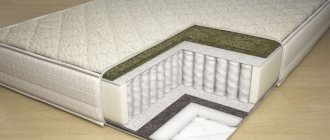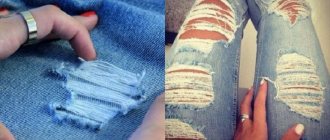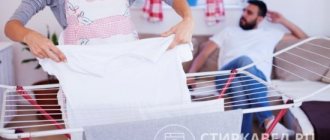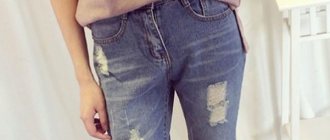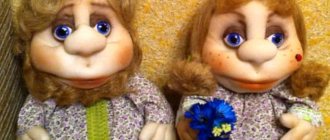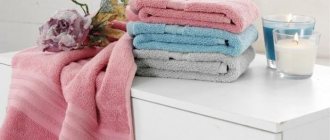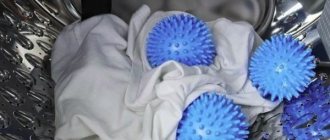Loft bed with protective side panel
Young children tend to have restless sleep; they often roll around and throw off the blanket, and falls are common. To avoid this, bumpers must be installed on cribs. But if the bed is purchased for growth, its design is usually repeated by an adult and there are no such barriers. The best solution is to install a temporary restraint that will allow the child to sleep without the risk of falling, and can be easily removed when he grows up.
The removable store barrier is mobile, easy to remove and easy to clean
Restrictors can be purchased at furniture stores, where a wide range of different materials and colors are available. Making a removable bed rail to order will provide the best combination with existing furniture, both in size and design - but it will not be cheap.
Wooden bed restrainer, ideal for children's beds
Therefore, the best solution would be to make a fall arrester for a child with your own hands.
Removable limiter that allows you to lower and raise the side if necessary
Do-it-yourself soft baby bed restraint
For newborn children, they mainly use soft bumpers, which are filled with foam rubber or padding polyester, lined with fabric on both sides.
It is advisable to choose natural and hypoallergenic material. Such a barrier is secured with Velcro or ties sewn around the perimeter of the rectangle. The number of sides can be chosen as desired.
Many people install strips on all four sides of the bed to prevent the child from hitting the wooden bars.
Expert opinion Ksenia Petrovna Romanova Expert in the field of interior design, as well as the head of a fabric sales salon
It is very easy to sew a soft children's bed restrainer with your own hands. To do this, you need to carefully measure the length of the side and think about what height to choose for the future barrier.
It depends on the child's activity. Buy the necessary materials: cotton fabric, padding polyester, Velcro tape, piping.
Cut the padding polyester according to your measurements and attach rectangles of fabric cut to size on both sides. Do not forget to retreat 5 cm from the filler on all sides.
Sew all layers with a stitch, folding the fabric inward 1 cm. At the time of sewing on the machine, sew the piping around the perimeter of the material.
The barrier will have a dense and finished appearance. At the end of the work, all that remains is to add ribbons or Velcro at the corners to attach the barrier to the wooden rods.
Color solutions
There is no friend for taste and color, as they say. The color scheme of the bed limiter, as well as the bed itself, depends entirely on the flight of your imagination, since there are a great many of them on the market.
But parents traditionally prefer to purchase pink for a girl and blue for a boy. Designers also recommend taking into account the general style of the room and the colors of the main furniture, so that the purchase does not deviate from the overall design idea of the room.
How to make a fall protection bed with your own hands
You can easily make a do-it-yourself limiter for a children's bed of any kind at home, both from scrap materials and from inexpensive building materials, despite the fact that this attribute will serve as long and reliably as the factory one.
If the built-in limiter is a series of vertical slats, then the arms and legs of babies can get stuck between them. In this case, a soft border is also necessary.
How to make a bed restrainer from wood with your own hands
First, you need to decide on the method of attaching the limiter; the easiest way is to attach it to the side of the bed, but this may not be a very aesthetic way and will damage the structure of the crib. You can choose any convenient one from the list of mounts listed above.
For older children, who are around the age of three, you can choose low restraints to prevent them from falling while sleeping.
Decide on the future design and shape of the holder. Prepare the necessary material and tools, namely:
- Reliable wooden bars;
- Hacksaw;
- Self-tapping screws and/or bolts;
- Screwdriver;
- Ruler or tape measure;
- Paper and pencil.
To make the simplest U-shaped barrier, which will be fastened with bolts, you will need slats 55 cm long; the height is selected individually, can be from 15 to 30 cm.
For a crib measuring 70x120 cm, a side with a height of 70 cm will be optimal.
Step-by-step description of the side manufacturing process:
- Draw a schematic diagram of the proposed barrier for the crib, taking into account future dimensions;
- Cut the wooden slats according to the dimensions indicated in the diagram;
- Carefully fasten the bars together to ultimately obtain a U-shaped frame.
- Drill holes for fastening bolts on the installed barrier and the side of the bed;
- Screw the limiter to the bed using bolts.
Older children need curbs to prevent them from falling while sleeping.
Side made of material
To do this you need:
- Take measurements of the crib;
- Construct a rough plan of the building on paper;
- Purchase foam rubber or padding polyester, fabric for the cover and fasteners in the required quantity;
- Roll up rolls of material and stitch;
- Sew covers of a suitable size;
- Sew fasteners onto the covers and mattress;
- Attach the restraint to the bed.
The color scheme of the bed limiter, as well as the bed itself, depends entirely on the flight of your imagination.
Plastic side
Pipes purchased from the plumbing department of a hardware store work well here. They are easy to fasten together, the fastenings are strong, and the whole structure is quite simple.
The holder can be attached to the side of the bed, to the bottom of the bed, or under the mattress, if the age and weight of the child allows.
Removable restraints are installed, as a rule, only on part of the bed, and therefore are suitable for older children - approximately three years of age and older.
Mesh side
- Measure the bed;
- Plan the approximate size and design of the limiter;
- Purchase materials: strong mesh, slats made of wood, metal.
- Cut and fasten the frame from the slats;
- Attach the mesh in the middle;
- Cover the frame with a suitable fabric or thoroughly sand the surface of the wood and varnish it, let it dry.
- Attach to the bed in any convenient way.
Parents traditionally prefer pink for a girl and blue for a boy.
Side for newborns
How to make a side for a children's bed so that the child does not fall? Restraints on newborn cribs are necessary not only to prevent children from falling, but also to soften the hard parts of the bed.
This function can be performed by soft woven bolsters and pillows placed around the perimeter of the crib and covering sharp corners.
In cribs designed for newborns, restraints are installed along the entire length, safely limiting the space of the crib.
Natural hypoallergenic materials are suitable for making barriers. It is not advisable to use hard parts to decorate the sides, because they can scratch the delicate skin of babies, or get into the respiratory tract and cause suffocation.
For the little ones, soft models of bumpers are available. They can cover the crib on four sides, or they can only be attached to two long sides.
Making a single wooden crib for children from 3 years old
The frame of the structure for a child includes a base and backrests, which is clearly shown in the drawing of the bed. The width and length of the product are determined by the dimensions of the mattress. The bottom of the bed should be no more than 35 cm from the floor, which will allow the child to climb onto it without effort.
The frame is made of two crossbars, which are made from edged boards measuring 50x100 mm. The required length of the product is measured with a tape measure, which is indicated with a pencil. According to the mark, two boards of a given size are sawn off using a jigsaw. Glue is applied to the side of each crossbar. Using self-tapping screws, 25x50 mm strips are fixed in these places for attaching the lamellas, and they should be 10 cm shorter than the crossbar.
Single children's bed with sleeping place 850x1935 mm
How is the base prepared for the mattress of a children's bed from 2 years old? To do this, boards are cut from slats (20x20 mm), the length of which corresponds to the width of the mattress. Their number is determined based on the complete filling of the base space. Products with a stop are attached parallel to each other to the crossbar strips using self-tapping screws. The step between them should be no more than 10 cm.
Then you need to sand all the holes for the fasteners. In the outer slats there are cutouts for the legs of the bed, which are made from timber measuring 50x50 mm in the amount of 8 pieces. The four elements under the headboard should be longer than those under the footboard. The blanks are glued together in pairs and fixed with self-tapping screws.
Creating bed side elements for children from 3 years old
The next step is to use an electric drill to make holes for dowels in boards with a 25 mm wide groove, which are used to make the footboard and headboard of the structure. They are drilled into the ends of the planks. You should be extremely careful when making holes, which should be located at the same level on all planks. They need to have the same depth, which is equal to ½ the length of the board.
The headboard and footboard of the bed can be made from solid pieces of chipboard or MDF. The first element is longer than the second. The width of the parts is determined based on the value of this parameter of the mattress, to which is added the double thickness of the wall of the longitudinal bars of the bed frame. Products can have a different shape of the end part, which can be round or wavy. If the side elements of the bed are made with railings, then another 25 mm should be added to the width of the product.
Holes for edgings in the bed parts are made using a drill
If wooden boards are used to make the side elements of a bed for children over 2 years old, then the following sequence of actions is required. Parts of equal length are cut from bars measuring 25x50 mm. They are inserted into the grooves of vertical boards filled with glue. The legs have holes for dowels. They house the side structural elements. The parts should be pressed tightly, excluding distortions and cracks.
Having made the vertical supports of the side elements, they should be tied with a frame around the perimeter to create a wooden roof. The last step is to attach the ridge beam, which will connect the base of the bed-house structure with your own hands. After all the parts of the product have been prepared, it is time to assemble them. Each element is first checked for chips and gouges, which are sealed with a putty mixture, and the surface is sanded to a smooth state. Next, all parts are treated with a primer or stain. After they have completely dried, the surface of the products is coated with paint.
Main varieties
Expert opinion Ksenia Petrovna Romanova Expert in the field of interior design, as well as the head of a fabric sales salon
The stationary borders-limiters have shaped cutouts that are used by babies as a stop, allowing them to climb into the crib without the help of adults
For very young children, a barrier that completely covers the side of the bed is recommended. In addition, it should be high enough so that the child cannot fall over or climb over it.
For older children, a small limiter is sufficient, the purpose of which is to prevent accidental falls in their sleep. Such barriers usually cover only part of the length of the bed, and are often made retractable for convenience.
A removable children's bed restraint is considered an ideal solution for arranging a sleeping place
A common option is a removable restraint for a child, which can be conveniently removed when it is no longer needed. This removable barrier will also be indispensable if you are traveling with small children - you can easily take it with you and install it on any child or adult bed.
A built-in border-limiter for a children's bed is purchased along with the rest of the children's furniture
Depending on the material of manufacture, there are several types of protective edges.
- Soft - the simplest design would be a barrier made of foam rubber or padding polyester rolled into tubes. The resulting rollers are attached to each other, gaining the required height of the side. For more convenient care and an aesthetic appearance, such a limiter is covered with removable covers that can be washed in a machine. Such structures are usually attached with Velcro or ties to the bed mattress.
Beautiful soft side for a girl's bed
A net is a fairly effective way to protect your baby from falling during sleep. It is necessary to make sure that the material is strong; the child should not tear or push through the mesh with his weight. For fastening, you can make a frame from wood or metal slats.
Protective mesh on a metal frame
Plastic - such a barrier can not only be purchased, but also made independently. To do this, you will need ordinary plastic pipes for plumbing - they are easily cut and fastened together using corners. The result is an easy-to-use and neat-looking limiter that fits well into any children's room. The advantage of the design is the ability to disassemble it at any time, as well as good tolerance for wet cleaning.
Limiter-barrier for a children's bed made of plastic pipes
Wooden is the traditional option, the most labor-intensive, but best suited to a classic interior. This barrier is also characterized by the greatest strength and durability. A wide variety of designs and designs are possible. A wooden stopper is usually painted to match the color of the furniture, and decorative design options are often used.
Wooden side for baby's bed
Metal side limiter for loft bed
It is quite easy to make a barrier of any type yourself, it will not require large economic costs, and will serve no less reliably than a purchased one.
Unusual DIY budget limiter
Decoration
Homemade limiter, with removable fabric cover
The limiter, made of wood, looks aesthetically pleasing; it is enough to polish or paint it with varnish so that there is no risk of getting a splinter. If plywood or chipboard was used, the side must be decorated. A soft cover or case is best. If you lay padding polyester on the inside, the child will be protected from accidental blows during sleep.
Protective edge against falls, decorated with fabric
The limiter can also be coated with a special paint for wooden surfaces.
Do-it-yourself wooden barrier-limiter for a bunk bed
Varieties
Depending on the intended purpose of the side, structures of different heights, configurations, fastening methods and degrees of protection are used. In cribs for babies, it is recommended to use restraints that completely cover the side or long side of the bed. For preschool children, protective systems are installed to protect them from accidentally falling out of bed during night or daytime sleep. They may not be installed along the entire perimeter of the bed, but cover only part of the long side of the mattress.
Often, a bed restraint is available with a mount that allows you to easily remove the unit from a child's bed and attach it to any other horizontal surface that requires restraint. These bumpers are convenient to use when moving, traveling, and in cases where the child needs to sleep outside of his usual bed. This installation is easy to install and will protect the child even if he sleeps on an adult bed.
All types of bed bumpers to prevent falls are divided into several categories, depending on the material of manufacture:
- Soft;
- Made from mesh-like material;
- Plastic;
- Wooden.
Soft
Soft bed bumpers are made of padding polyester material or foam rubber. A layer of this material is rolled into tubes and fastened together so that the resulting structure is stable and indestructible. By adjusting the number of rollers stacked on top of each other, sides of different heights are made.
In order for such limiters to always look clean and neat, they are covered with covers with a removable snake. The covers are washed in the machine, ironed and put back on foam rollers. This will help to always keep the children's bed clean and the room beautiful.
In order for this design to adhere well to the bed, foam rollers, fastened together, are attached to the mattress. For this, homemade ties, buttons or sew-on zippers are used. Another simple do-it-yourself fastening option is sewing Velcro onto the bed restrainer and onto the mattress. Velcro fastening is one of the most reliable, but at the same time easy to use and operate methods of attaching foam bumpers to a mattress.
Net
A bed limiter made of mesh material is used for cribs if the child is not too small and sleeps separately from his parents. The mesh must be very strong and can support the child if he rests his entire weight on it while sleeping. To securely fasten such protection, you should prepare a frame for the mesh and securely fasten it. The frame is made of wooden slats or metal stops. The restraints themselves are softened by putting fabric covers or foam pillows on them.
Plastic
Plastic protective barriers for beds come in two types:
- Purchased;
- Made by yourself.
The sides, made of plastic, have fairly high strength, combined with the low weight of the protective installation itself. Commercially available plastic restraints have an original set of necessary fittings for attaching the system to the bed.
When making such a system yourself, you can use available materials, such as plastic pipes for plumbing. They are very easy to fasten together, and thus create a side with vertical slats. The height of the slats is adjusted depending on needs and desires, the width of the holes between the slats - depending on the intended purpose of the side. The plastic bed barrier for children is very light, and there is no need to put soft covers on it. But if such a bed barrier is made of plumbing pipes, for ethical reasons it is covered with a cover or a thin blanket.
Wooden
Wooden restraints are the most popular and are often sold complete with cribs. The main advantage of a wooden stopper is that it is durable, versatile, and also that it fits any interior design. In addition, this installation is easy to wash, remove, and is completely safe for the baby. A wooden bed rail can be made in different designs, have different heights and fastening methods. Wooden barriers are not only used for cribs; they can be used as a removable barrier option for teenage or bunk beds.
Criterias of choice
When choosing a bed restrainer, you should pay attention to the purpose of the side and take into account the real possibilities. The main criteria when choosing a protective system are:
Age of the child - to care for a small child you will need a functional bed with guards, and the smaller the child, the more reliable the protection system should be. If the child is highly mobile and can carry out playful activities in bed, fall guards also serve the function of preventing bruises and injuries. It is advisable to create them soft. If you need to create a protection for an adult's bed, you should first think about the purpose of the fence. Railings for the disabled serve to create convenience when climbing, so they must first of all be strong and detachable. There is no need to create foam cushions for them. The main purpose of softening elements is to protect the child’s head and body from bruises; Bed size - when making or ordering a child bed restrainer, you must measure the length and width of the mattress, since not all models are made to standard sizes. Removable barriers can be used to cover the entire length of the side of the mattress in a child's bed and to limit the horizontal space in which the child is forced to sleep and which needs to be protected; Room design - if this criterion is important when choosing a protective system, it is recommended to select protection taking into account the design of the children's room
But when installing a protective system, first of all you should pay attention to the reliability of the installation.
An important factor when choosing restraints is also the financial capabilities of parents. Homemade options do not require significant financial costs, but their production requires a lot of time and effort. Pre-fabricated barriers are sometimes expensive and require little construction skills to install, but they offer a high level of protection and reliability.
When considering, selecting, making or purchasing and installing bed guards, much attention is paid to the intended purpose of the bed rail and the weight of the sleeping person. These parameters are the main ones when choosing protective systems
Based on financial capabilities, personal preferences, room design and the features of each specific design, the most optimal option for each specific bed is selected. When traveling frequently with small children, it is recommended to choose removable barriers that are installed on different horizontal surfaces. They will serve as reliable protection for the child wherever he sleeps.
If the baby constantly sleeps in his crib, it is recommended to install a stationary side that is attached to the base of the bed. It will serve as protection for the child not only during sleep, but also during play. The child can stand up, holding the side with his hands and leaning on it. To protect the sleep of teenagers or adults, protective systems are chosen that cover only part of the side of the mattress, since they look more aesthetically pleasing, but fully fulfill their functional purposes.
Is it possible to make the sides yourself?
To make the simplest limiter, no special carpentry skills are required, just care and precision.
Before you begin, you need to decide on the type of fastening:
- Screwing the barrier to the side of the bed. The simplest option that allows you to save not only materials, but also time. However, it does not look particularly aesthetically pleasing and, in addition, damages the bed material.
- Attaching the barrier to the bottom of the bed using holders. They are covered with a mattress on top, which completely camouflages them. This is a more convenient option, but not any bed design is suitable for its implementation.
The simplest wooden limiter, made by yourself.
The following tools and materials are required for work:
- treated wooden slats;
- self-tapping screws or bolts;
- wood hacksaw;
- screwdriver;
- paper and a simple pencil;
- ruler or tape measure.
For the simplest U-shaped barrier, fastened with bolts, slats 55 cm long are required. The total height can be in the range of 15-30 cm.
The work flow looks like this:
- Creation of a detailed drawing indicating the dimensions of all parts, as well as methods and attachment points.
- Sawing the slats in accordance with the diagram. If desired, they can be sent to a workshop, where this work will be performed using professional equipment and with high precision.
- Assembling the racks to form a U-shaped structure, on which it is necessary to mark places for fastening.
- Drilling holes in the bed side and slats.
- Screwing the sideboard to the bed.
Making a barrier from plastic pipes
A barrier-limiter for a children's bed can also be made from plastic plumbing pipes. You will need a special tool to cut such products, pipes of small diameter and connecting corners of the same cross-section.
Using this scheme, take from 5 to 7 straight tubes of the same size, cut small connecting ones up to 20 cm, and assemble the structure using corners of different configurations. Straight sections of the barrier are secured with T-shaped corners, the edges with L-shaped corners. To attach the holder of the future barrier, choose them with 4 holes.
The result is a smooth and rounded product. It is easy to wash and easy to make.
Step-by-step instruction
The design manufacturing process includes the following steps:
- 5–7 parts of the same size are cut out of the pipe (it is determined depending on the desired height of the side), as well as smaller connecting elements that will be located perpendicular to the main rods. Their size depends on the frequency of arrangement of long parts.
- Using the corners, the structure is assembled into a single whole. L-shaped objects are used in the corners, T-shaped objects are used in the upper part, and products with 4 holes are used at the bottom.
- At the bottom of the product (where another hole remains), the remaining pieces of pipes are inserted, which during operation will be located under the mattress and hold the entire structure.
- The product is painted in the color you like.
This design is easy to install, use and maintain. If necessary, it can be easily disassembled, washed, and then, when it dries, put back in place.
Organization of water drainage in a summer shower
There are several ways to arrange a drain in a summer shower. Thus, water can be discharged into a filtration well or into a filtration field. In the latter option, channels are installed between the beds. This will allow you to irrigate the area at the same time without any special costs.
Diversions are carried out in open and closed ways. In the first option, ditches are made at a slight slope from the collection site. This option is often used on moisture-resistant soils. The closed method involves laying pipes in the ground.
You need to decide where the used water will flow, given that it will be soapy. Source pol-exp.com
Colors and design
Today, manufacturers produce bumpers of various shapes, materials and colors. When choosing, parents most often focus on the gender of the child. For girls, a pink side is most often purchased, and for boys, a blue option. But in addition to the gender of the child, you need to focus on the style of the room and the color of the furniture.
If desired, you can purchase a stopper of a simple rectangular shape, but decorated with pockets, appliqués and many other elements that give the product an original look. There are options in the shape of animals, fairy-tale characters, flowers and many other items.
Thanks to the wide range of colors and variety of shapes, you can choose a restraint that will perfectly harmonize with your interior, perform a protective function and simultaneously develop the baby.
Peculiarities
A bed restraint is a protective barrier that prevents the person on the bed from falling. Such devices can be built-in, that is, the design of the bed provides for the presence of such a barrier in advance.
You can also buy a limiter separately if you need it. It is clear that their color variations are also varied.
You can also choose the material from which the product is made based on your tastes and preferences.
Practical application of combination
Masking wall irregularities
Using this technique you can also disguise communications and details that spoil the interior. Using wallpaper of different colors, you can easily divide a room into zones without resorting to additional costs for arches and partitions.
Changing the size of the room. By highlighting one wall with bright wallpaper or a print, you can visually expand the room.
Decoration. With the help of bright accents, you can define the general idea of the entire room, set the mood for textiles and other decorative elements.
You can highlight one item and thereby make it the main one in the room, for example, use several stripes of contrasting wallpaper of the same color to highlight the bed area in the bedroom.
How to make bed bumpers to prevent falls with your own hands?
We invite you to consider two options for self-production:
Wooden sides
- Once you have decided on the dimensions, purchase or make wooden blocks.
- Take an equal number of partitions on each side.
- Buy 8 boards for the very top and bottom of the structure.
- Connect the blocks equally to each board. Using nails or wood glue. Do everything carefully - remember this for the child.
- Nail the finished “cage” to the bed itself.
Diagram: DIY bed bumpers to prevent falls
Diagram: DIY bed bumpers to prevent falls
Diagram: DIY bed bumpers to prevent falls
Fabric pillow sides.
- Use foam rubber! This is a soft, easily washable material.
- Measure the dimensions that fit your crib.
- Choose the right fabric. Calm and gentle tones. Natural cotton will do.
- Cushion stitch each section.
- Fill them with foam sheets.
- Sew a zipper to each pillow using a fabric machine.
- Attach strings of sufficient length to each pillow.
Photo: Fabric pillow sides
Pattern: Fabric pillow sides
Or they can be made in the form of pillows and attached to the sides
We understand how sometimes parents get tired of caring and crying children. You don’t always want to sew or make things. There is a simple option: roll up soft blankets and lay them around the perimeter. Temporary, but convenient. And when a good mood overtakes you, start creating borders with your own hands!
Thank you for reading these helpful tips and we hope your dreams become stronger and more peaceful.
Materials
Restrictors that have a protective and decorative function can be made of various materials.
Soft restraints are made of durable cotton fabric. The filler used is foam rubber, padding polyester or other soft and voluminous material. Sintepon is a soft hypoallergenic material with high thermal insulation properties, suitable for children from 0 to 6 months.
Soft, but at the same time elastic foam rubber is most often used as a filler. For convenience, it is placed in removable covers.
As a rule, such fillers are decorated with various inserts or applications.
Sometimes in such sides some hard material is chosen as the base. A solid base is upholstered with fabric and filler and the result is a more durable, but at the same time comfortable and safe option.
Solid sides can be made of wood, plastic or metal. As a rule, they look like either a solid canvas, or a slatted type, or a canvas with figured cutouts.
- Wooden options have a fairly durable structure, are environmentally friendly and can be installed in three different positions. Manufacturers use species such as oak, pine, maple or ash. All products undergo careful processing. They must be sanded and coated with varnish or paint that does not contain lead or other harmful components.
- The metal sides are quite reliable and durable. Metal is a cold material and therefore is most often used in combination with other materials.
- The design of combined sides can consist of various materials: solid wood, chipboard, plastic, metal in combination with soft foam rubber and fabric.
Kinds
All limiters manufactured by manufacturers are divided into stationary and removable options.
Stationary bumpers are additional elements built into the bed structure on both sides and are located along the length of the product. In cribs designed for newborns, restraints are installed along the entire length, safely limiting the space of the crib.
For older children, manufacturers produce cribs in which the restraints have shaped cutouts that are used by children as a stop, allowing them to climb into the crib without the help of adults. For children of primary school age, the built-in sides do not cover the entire length of the bed and serve more for convenience. Although in bunk beds and loft beds, the restraints perform their protective function.
Removable restraints can be installed either on one side of the bed, when installing it against a wall, or on both sides, if it is planned to be installed away from the wall, for example, next to an adult bed. In this case, they are an excellent barrier against falls on an adult parent's bed.
For the little ones, soft models of bumpers are available. They can cover the crib on four sides, or they can only be attached to two long sides. Soft stops installed on the side are rectangular in shape. There is also a protective cushion cushion on sale, most often in the shape of a square. This limiter is attached to the slats of the crib using ties.
The best manufacturers
The market for barriers for children's beds is represented by many manufacturers. User experience allows us to highlight several trusted brands:
- Lindam is a well-known brand from the USA that produces folding mesh bed barriers. It is distinguished by high quality and a well-thought-out fastening system.
- Ikea is a famous Swedish brand that traditionally produces a wide range of products for children, including removable soft sides in cribs for newborns.
- Baby Safe is a Chinese brand widely represented on the Russian market. Mainly produces mesh barriers.
- Leader Kids is a domestic manufacturer of textiles for children. It is distinguished by a variety of prints and colors, and the high quality of the raw materials used.
- Sweet Baby is a joint Russian-Italian production. The assortment includes a variety of models of fabric bumpers and pillows in trendy colors. High-quality natural fabrics are used in production.
LindamIkea
Baby SafeLeader KidsSweet Baby
Dimensions and safest height
Depending on the age of the child sleeping on a bed with a protective side, one of the following limiters is selected:
- Covering the entire side of the bed;
- Covering most of the long side of the mattress;
- Decorative limiter.
Barriers that cover the entire side of the bed are installed either in cribs for babies or to protect a person sleeping on the second floor of a bunk bed. Even if a bunk bed is intended for teenage children or adults, a restraint should be installed on it, since the likelihood of falling from such a bed is quite high, and much higher than the likelihood of falling from a single bunk bed.
The height of the slats of protective structures for this purpose ranges from 20 to 90 cm, and mostly depends on the age of the sleeping person. For children under one year of age, a limiter with a rail height of at least 70 cm is installed. To increase the level of safety, a limiter with a slats height of up to 90 cm is selected. The height of such sides is designed for a child under 1 year of age who can stand on their own feet. This height of the side will prevent the child from falling to the floor (he will not fall over the railing). For a child who does not yet know how to sit, use 30 cm high sideboards; for a child who can sit, use 50 cm high protection. If there is a possibility that the baby will stand on his feet, it is necessary to use 90 cm high bed barriers around the entire perimeter.
If such a barrier is installed for the bed of a teenager or an adult sleeping on the second floor of a bunk bed, then the height of the limiter is set much less than 90 or even 70 cm. A height of 20-30 cm will be enough to protect the sleeper from falling. Bed safety barriers that are not installed along the entire length of the mattress also protect the sleeping child. Such limiters are installed for preschool children, or on the top floor of bunk beds, if not small children sleep on them. Such a limiter has a number of advantages over those that completely cover the side of the bed. Firstly, getting into such a bed is much more convenient, and secondly, the process of installing and lowering such a limiter is much simpler.
Decorative bumpers are an attribute of beds installed in designer bedrooms. They rarely perform protective functions, and when installing them one cannot count on a high degree of protection. Such design elements are installed several times on one bed, and there are significant gaps between them. If this is a bed for a child, then it is better not to settle on this option. The gaps between the sides are often large enough to prevent a child under the age of two from falling. But even such small sides can protect a teenager or an adult and serve as a kind of restriction.
Which bed side rails are best to buy for the disabled and elderly?
When rating each of the five track systems, we considered factors such as weight-bearing capacity, comfort, and overall user safety.
All of the bed rail systems reviewed here are high quality and durable. However, there are many unique elements that set one apart from the other!
The MediQ bed rail system is adjustable and is a solid choice for a system that will support any weight. The unit is fairly easy to install (though not as easy as some of the others). Additionally, large openings between railing bars do present grip issues unless a rail guard is also used. This model has 2 added conveniences: it folds down when not in use and includes a storage pouch for small care items. In addition, the space between the slats significantly reduces the likelihood of limbs being caught. After all, it can be installed on either side of the bed and allows customers to choose their main side and also switch sides depending on the mattress.
The Versatile Safety Ring is an ideal choice for bariatric patients who need strong balance support when getting in or out of bed. This handle also eliminates trapping risks as it is smaller than most rail systems.
The MediQ soft bed rail is portable and supports significant weight loads along with its multiple desirable features. The non-slip foam handle keeps consumers' hands from rubbing when their hands are wet or sweaty and has a storage pocket. The entire guard can be easily moved to any position thanks to its miniature size and low weight.
Our top pick in this group of bed rails is the Stander EZ Soft Rail as it combines many of the features of our other products and adds even more!
